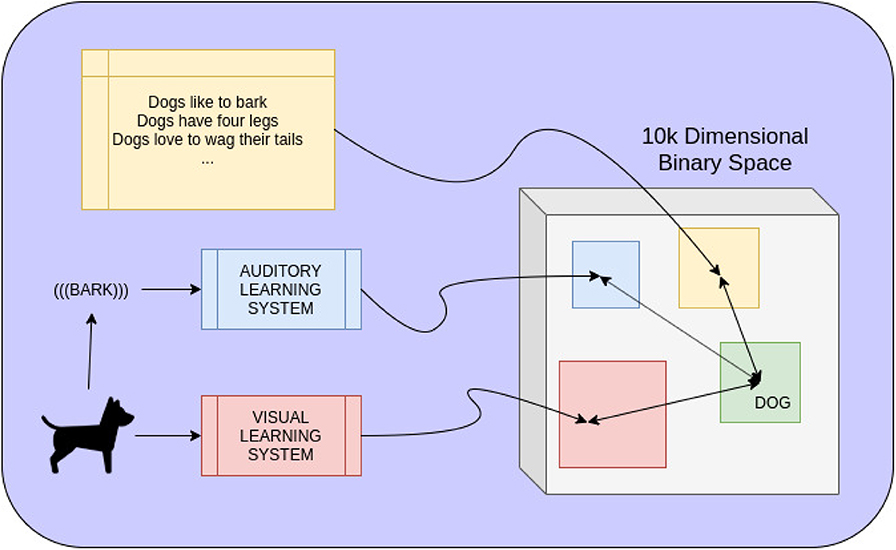This article was published as a part of the Data Science Blogathon.
Introduction
In machine learning, the data is an essential part of the training of machine learning algorithms. The amount of data and the data quality highly affect the results from the machine learning algorithms. Almost all machine learning algorithms are data dependent, and their performance can be enhanced until some threshold amount of the data. However, the traditional machine learning algorithm’s behavior tends to be constant after some data is fed to the model.
This article will discuss the knowledge-enhanced machine learning techniques that introduce hierarchical and symbolic methods with limited data. Here we will discuss these methods, their relevance, and working mechanisms, followed by other vital discussions related to them. These methods are proper when there is little data and a need to train an accurate machine-learning model. the article will help one to understand the concepts related to knowledge and enhance machine learning better, and will able to make efficient choices and decisions in case of limited data scenarios.
Knowledge Enhanced Machine Learning
As the name suggests, knowledge enhanced machine learning is a type of technique where the knowledge of machine learning algorithms is enhanced by human capabilities or human understanding. In this technique, the machine learning algorithms apply their knowledge, and human or domain knowledge is integrated.
We humans can be trained on limited data, meaning that humans can learn several things by seeing or practicing stuff quickly and with limited data. For example, If we see a particular device, let’s say a Laptop, we can easily classify it and say it’s a type of electronic device. Also, we can classify it as an HP, Dell, or another model.

Source – Google
Machine learning models can classify several objects and perform specific tasks very quickly and efficiently, but the only problem is the amount of data. Yes, it requires a lot more amount of data to train an accurate model. But the knowledge-enhanced machine learning approach comes into the picture; it combines majorly two fields, the first is the model’s knowledge, and the other is human knowledge or human capabilities.
Hierarchical Learning and Symbolic Methods are knowledge enhancement machine learning approaches where human knowledge can be used to train a machine learning model with limited data, and the model’s performance can be enhanced.
Hierarchical Learning
As discussed above, when we humans see particular objects, our human mind automatically tries to classify the object into several classes. Let’s try to understand the same thing by taking appropriate examples.

Source – Google
As discussed above, the human mind can be taken as a trained machine learning model on limited data that classifies the object as a spot into several categories. Let’s take an example to understand the same thing.
Let’s suppose you saw the dog. Looking at the dog, we can easily classify its parent category as a “pet” and classify the dog as a labrador, dalmatian, french bulldog, or poodle. Here we can see that there are several levels of hierarchy where every single layer has several categories, and based on the knowledge of hierarchy, we humans can classify objects.
To implement this approach, the machine learning model can be trained on every layer of the hierarchy, and the model can be hyper-tuned to obtain the hierarchical learning model.
Symbolic Methods
The symbolic methods are also a knowledge base machine learning approach that tries to integrate human knowledge to classify several objects and build an accurate machine learning model.
Some machine learning models are trained so that whenever they are given an unseen image or object, they can efficiently and accurately classify the particular thing. These models are trained on a large amount of data.
We implement the same thing in symbolic methods but with limited data. Here we create the description or tags for the various objects and feed the data to the model. As there is little data available, there will be few images to train the model on, but the description of many objects will still be available.

Source – Google
Once the model is trained on such data, it can efficiently classify the unseen objects without training in such an image dataset, as it will use the description or tags provided based on human knowledge. So here, human knowledge is used to create the descriptions or tags of several objects, and machine learning models are used to train on such data.
Hierarchical vs. Symbolic Methods
As both approaches use human knowledge, a gentle question might come to mind: What is the main difference between such techniques?
The hierarchical learning approach is more towards a hierarchy of an object and its classification. Here human knowledge is used to classify and create the hierarchy of an object. Then machine learning models are used to train the algorithm on every level of the hierarchy for limited data scenarios.
In Symbolic methods, human knowledge is used to create the descriptions or the tags for particular objects, where the machine learning models are trained on limited image data. This machine learning model can now perform classification tasks on unseen images using human-generated descriptions or tags.
In general, we can not say that one of the approaches is always better, it all depends on the specific scenario of the data models and problem statement. Both approaches are nowadays being used for better performance on limited data, but one could use a specific approach per the requirement and conditions associated.
Conclusion
This article discussed knowledge enhanced machine learning techniques and their types. The hierarchical and symbolic approaches are discussed in detail with their core intuition and the difference between such methods. These articles will help geeks to understand the limited data scenario better and in an efficient way. They will help in several interviews and examinations as it is more of an academic topic.
Some Key Takeaways from this article are:
1. Knowledge-enhanced machine learning is a technique where human knowledge is used to train a machine learning model.
2. In the hierarchical technique, the machine learning model is strained on every hierarchy level generated by human knowledge or domain experts.
3. Symbolic methods also use human knowledge to generate descriptions or tags related to several objects so that the machine learning model can also classify unseen images and objects.
4. Both of the approaches are useful for specific cases and can be implemented as per the requirement and problem statement related to machine learning.
Want to Contact the Author?
Follow Parth Shukla @AnalyticsVidhya, LinkedIn, Twitter, and Medium for more content.
Contact Parth Shukla @Parth Shukla | Portfolio or Parth Shukla | Email to contact me.
The media shown in this article is not owned by Analytics Vidhya and is used at the Author’s discretion.




